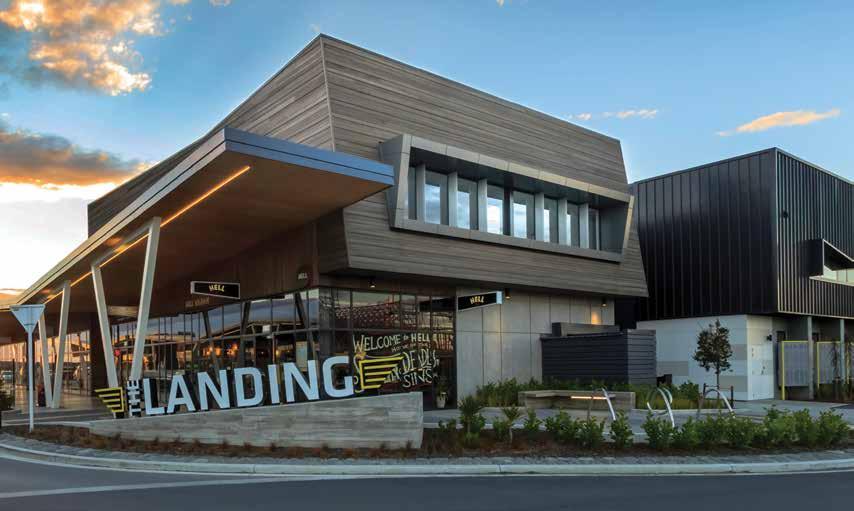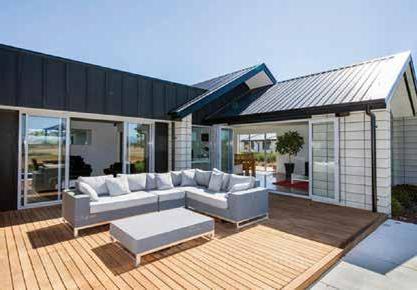
4 minute read
Beyond green claims
Understanding sustainable products and materials
There’s a shift towards sustainable products and the considered use of materials happening right now. The use of Environmental Product Declarations (EPDs), Life Cycle Assessments (LCAs), and ecolabels is increasingly common, and we’re likely to see greater transparency and reporting of how well building products serve the environment become the new norm.
Advertisement
Half of building-related carbon emissions come from the materials used to make them. Fortunately, we know we can do better both through what we use and how they’re made. If we make some key improvements we could take the equivalent of up to 15 percent of New Zealand’s passenger cars off the road permanently.
We know there are real and increasingly important environmental impacts. We also know there are strong drivers that will force the industry to actively consider the impact of the products and materials we are using as we work towards a zero-carbon future.
Recently, the Ministry of Business, Innovation and Employment announced its Building for Climate Change programme promising a ‘once in a generation’ system reform. It plans to set mandatory reporting requirements and targets for emissions, including from construction materials and their disposal. “These targets will provide pressure on the whole supply chain to reduce emissions,” the Ministry says.
Also, being driven in part by Government, there is a growing environmental approach to procurement. Its residential development agency Kainga Ora have committed to building homes rated to Homestar and we’re seeing an increasing number of organisations and companies building exclusively to Homestar or its commercial building equivalent Green Star.
Not only are these developments growing the sector’s appreciation and ability to deliver greener building, importantly they highlight the need for effective and transparent product information. If we expect designers and builders to make good decisions about what goes into a building we need to ensure there’s good information available to them.
Unfortunately, and unsurprisingly, the complex world of sustainable materials and credentials is often poorly understood.
When it comes to designing and building a sustainable space the Green Building Council recognises products that are reused, have high recycled content, have ecolabels, stewardship programmes, or that have low Volatile Organic Compound emissions. Importantly, we rely on these claims being well documented and verifiable. We rate green buildings rather than individual products and materials. Instead we use, and incentivise the work of, third-party certifications and ecolabels who are independent of manufacturers, suppliers and the NZGBC. There is a raft of tools out there that either provide transparency about a material’s footprint or directly validate better products. Life Cycle Assessments (LCAs) provide a comprehensive calculation of a product’s environmental footprint from cradle to grave (i.e. through its manufacture, use, end of life etc.). For the average builder or consumer an LCA is largely unintelligible and therefore unhelpful in making decisions or comparisons.
This is where an Environmental Product Declaration (EPD) is useful. An EPD takes the extensive LCA data and summarises the key information in a more succinct and accessible form. It’s like a nutrition label for a product except instead of providing data on the energy, fat and sodium, it provides the carbon footprint, water footprint and embodied energy, among other things. This allows fairer comparisons between products and supports better decision-making. They’re widely recognised by green rating tools (BREEAM, LEED, Green Star etc.) and can therefore also differentiate products in a highly competitive field.
EPDs differ from an ecolabel in that they simply state a product’s environmental performance rather than benchmark or certify any environmental merit. However, given the rigorous process behind it, an EPD will often prompt improvements and shifts by manufacturers and the supply chain to improve.
Ecolabel schemes like ECNZ, GreenTag GreenRate, PEFC and Good Environmental Choice Australia (GECA) can help identify products that are better environmentally through their manufacture, or that have little to no hazardous substances in the products themselves. They often provide clear and easily communicable verification of sustainable products and are therefore a useful tool for the sector to establish a greener build.
A list of ecolabels recognised under Green Star and Homestar ratings can be found on the NZGBC website. There are also useful databases from the likes of EnviroSpec for comparing and selecting products and their certifications.
What all of these schemes have in common is they’re data led, independent and, most importantly, they’re transparent. It’s no longer good enough to say a material or product is eco, green, or better for the environment. We need the information or certification to back that up.
Andrew Eagles, CEO New Zealand Green Building Council. The New Zealand Green Building Council (NZGBC) is a not-for-profit industry organisation that promotes better buildings, because better buildings mean healthier, happier people. It has the backing of approximately 500 members across the construction and property sectors. For more info visit nzgbc.org.nz











